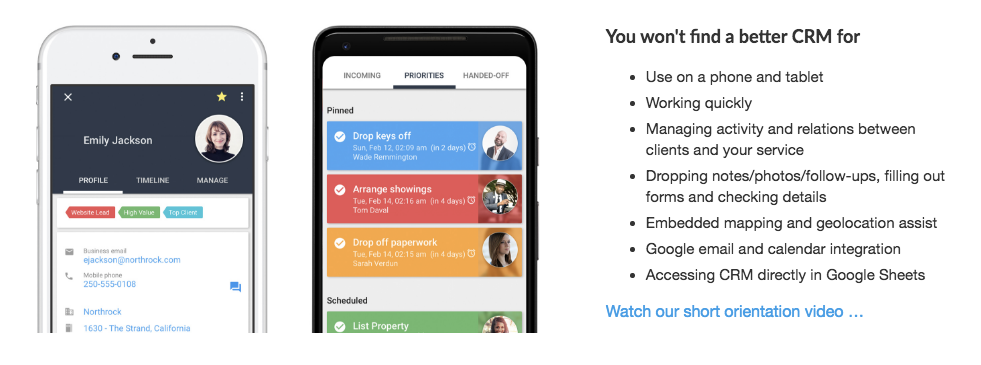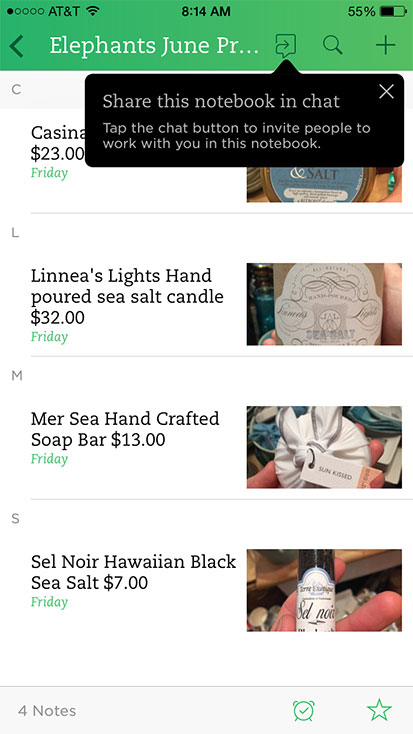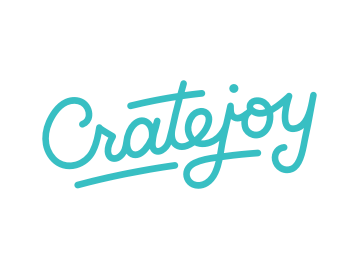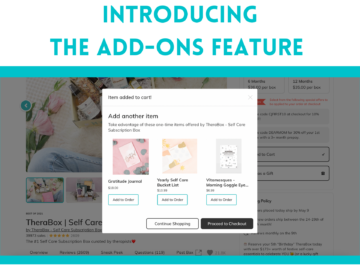Start your own subscription box: Download the Cratejoy Subscription Box Business Plan
Subscription box procurement means, in layman’s terms, the process of finding, purchasing, packing and shipping products featured by your subscription service. For subscription businesses that offer a curated box of chosen products (rather than a mix of self-made products), the choices you make in procurement can have serious effects on customer experience, retention, and growth.
In short: procurement leads directly to the box on your customer’s doorstep. Subscribers will judge the value of their subscription on it.
Getting procurement right is crucial to running a successful subscription business, regardless of what you offer. Maybe you help customers discover new trends through product samples, or you offer a luxury experience with full-size beauty products. Either way, mapping a detailed sales funnel –– or alternatively, company buying journey –– is the best way to streamline the procurement process, whether that involves buying products or dispersing product samples for companies.
Today, we’ll discuss 6 resources to help you with your procurement process:
- Customer relationship management (CRM) tools
- Organizational tools
- Checklist for procurement
- Business invitations
- Billing and shipping PDF
- Purchase orders
So let’s get to it!
Step 1: Customer Relationship Management
If this is your first month procuring for your subscription box, invest in a good CRM. Just do it.
CRM stands for “Customer Relationship Management.” Think of these applications as an electronic Rolodex on steroids. Because you’re likely including a handful of products each month, you’ll be contacting dozens, hundreds, and even thousands of merchants to be featured as the subscription grows. Consequently, your contact list is going to grow like crazy. Luckily, a CRM makes managing contacts easy.
There are plenty of CRMs to choose from, so it’s important to find the CRM that’s right for you. Generally, Salesforce is considered the top CRM in the industry –– and it’s with good reason. Salesforce has tons of useful features, and pricing starts out competitively if you’re using just the basic plan with 1-2 people needing access.

Personally, I employ Solve360‘s CRM. The drawbacks are there –– it’s not as device-compatible, and it’s better for freelancing or small businesses than for larger businesses. However, for procurement for a small subscription business, I find that managing contacts by way of using category tags and scheduled emails is a simpler, faster process.
Step 2: Evernote for Procurement and Note-Taking Support
Sometimes the best products for your box are discovered in the aisles of your grocery store or at a local farmers market. When I started my own subscription business and came across a product like this, I’d just whip out my phone, snap a photo, and (in theory) pull up the photo later to create a new contact in my CRM. In reality, this led to a disorganized product directory and hundreds of photos cluttering my phone.
Additionally, I often found myself finding cool items online, but without a solid way of saving them or including my thoughts on what I found. I just hoped I’d return to my bookmark and the same idea would hit me.
Evernote is an awesome solution to both of these problems. On its face, Evernote is simply a note-taking and archiving utility, but for the curator of a subscription, you can use it to superpower your product and theme searches. Here are some ways to use Evernote like a pro:
Web Clipper Extension: Let’s say you’re brainstorming a theme for some distant month, casually surfing. Rather than bookmarking pages that interest you, the Web Clipper lets you save them with notes in a particular folder. Plus, because this extension integrates with Google, the next time you’re looking for ideas, your notes will come up onscreen.
Tagging: Tagging can be a powerful organizational resource in Evernote, just as it is in your CRM. But Evernote allows you to add more subjective information into a database. As a result, passing thoughts, ideas for box presentation, and so on can all be accessed. If you use the same tags in your CRM, you can pull up this information side-by-side. This can help to make sure that you’re not forgetting anything and you’re making the most of every minute.
A Whole Bunch of Other Features: Evernote also has a ton of other useful features, like a business card search using their optical character recognition, receipt/login storage, the capacity for teams to work on the same notebook, and a mobile scanner app for PDFs.
Here’s an example:
Step 3: Procurement Checklist
Once you’ve got a CRM chosen and you’re organizing your searches and notes, we suggest you build a few documents that help with the procurement process. First, of course, you’ll need a Procurement Checklist.
The procurement checklist is meant to guide you as you select, negotiate with, and purchase products from a vendor. I like to start my checklist after I’ve entered the business into my CRM in order to avoid repeating steps. Then I use Trello, a visual, board-based work organization system, to move “cards” (for businesses/products) through the checklist.
Follow these steps:
- Fits with Monthly Theme
- Send Business Invitation (explained below)
- Confirm Order # Total
- Finalize Price Negotiation
- Send PO/Contract, Resources + Shipping Information
- Products Shipped/Arrived
- Payment Sent
- Marketing Follow Up
Here’s an example board I built in Trello.

Rather than updating vendors in my CRM, I find it easier to create a single board to type up basic notes. As I work from left to right, I reduce the number of cards. So eventually, I end up with 6-8 cards in the final list, which lets me know I’m settled on products and ready to submit payments. Now, I can begin my monthly marketing efforts associated with the subscription business.
If this interests you, I definitely suggest checking out some of the simple ways you can customize boards and begin to use Trello like an expert.
Step 4: Business Invitations
As you might notice from the lists in Trello, there are a number of other resources you can use in the procurement process. One of the most powerful is the business invitation.
The business invitation is a short, yet compelling, document that explains what your business does, its mission, and your value proposition to vendors. This is the marketing material you provide to your brand partners, so it does the legwork of explaining why they want to be in your box. Keep it well-designed, readable, and short enough to keep the reader’s attention.
In your business invitation, make sure to include the following.
- What is your business?
- Do you buy products or are you asking for them for free?
- Depending on the above, what are the main benefits for vendors?
- Pull customer demographics from Facebook Insights and explain your target market
- Highlight the services you provide to vendors (such as their inclusion in the box and on the packing list)
- Note any past vendor partners
- Your or your team’s unique qualifications
- Final call to action and contact information
You can customize this as needed, but mainly, try to compress this information into a few short, eye-catching pages. Less is more.
Step 5: Billing and Shipping Information PDF
Usually, this is bundled with the next item in our list, and it comes after you’ve completed negotiating with your vendors. This document is not always necessary, but it’s nice to have on hand to eliminate confusion and make sure that shipping information is understood. This is especially important if you outsource your fulfillment!
This PDF is used to cover payment options and clarify where your vendors should direct shipments (like a partner warehouse). This is the precursor to finalizing your contact and can be sent out before products are shipped. Usually, you can send this before the vendor provides an invoice.
Step 6: Purchase Order
Having a purchase order that outlines the product, price, delivery date, and items to be delivered is helpful for everyone. Like your shipping PDF, this adds clarity to the transaction and ensures accountability for all parties. This is a simple document that can help you keep track of all your purchasing/procurement efforts each month. Some essential parts of the Purchase Order include:
- Merchant Information: Both yours and the vendor’s
- Specific Product Information: product details, quantity, and price
- Shipping: Delivery method, carrier, and delivery date
- Specific instructions: for example, where to send invoices
- Signature
And that’s it! Consider spending a bit of time designing it to match your branding, but that’s not 100% necessary. Its purpose is to guarantee that your product (and price) is set and the product arrives on time to ship.
For more on procurement, check out our other articles on packaging, products, and fulfillment.
And don’t forget about boxes! Check out the great options from Cratejoy’s collaboration with BoxUp!
Cratejoy is an all in one subscription commerce platform that includes everything you need to start your own subscription commerce business online. Try it free for 14 days.




